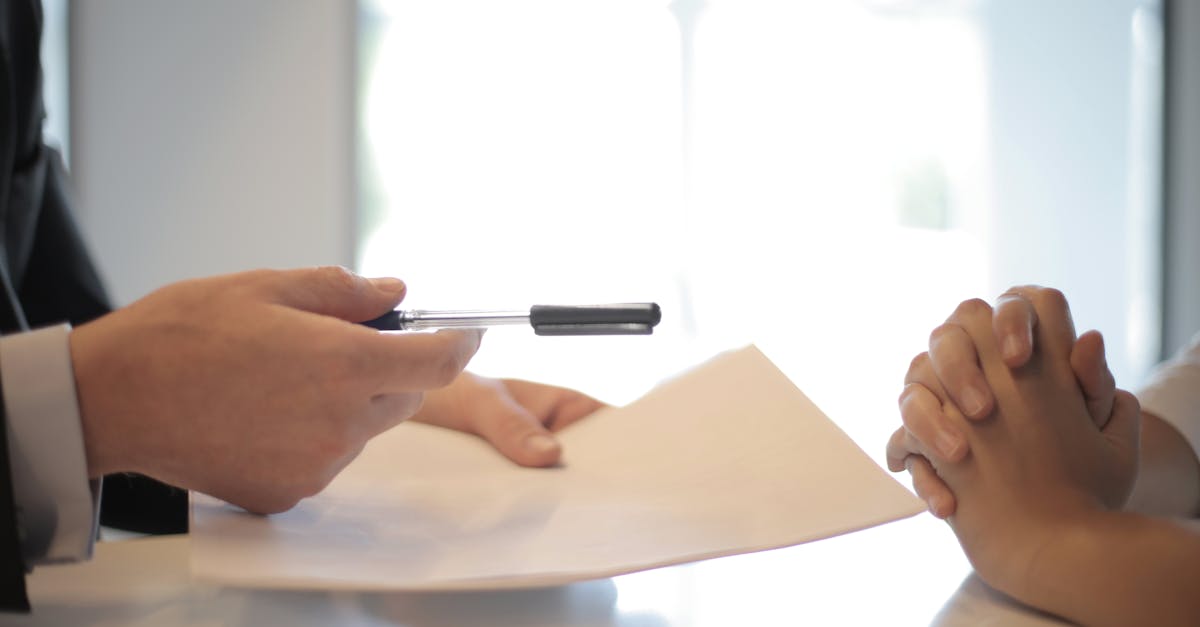Imagine having the financial freedom to make important purchases without worrying about paying for them upfront. This is where credit cards come in handy, offering a convenient way to pay for goods and services with the promise of paying off the balance at a later date. However, not all credit cards are created equal, which is why it’s essential to understand their pros and cons before applying for one.
In this article, we’ll be exploring unsecured credit cards: what they are, their benefits and drawbacks, how they differ from secured credit cards, tips on choosing the right one for your needs, and how to use them responsibly. By the time you’re done reading this article, you’ll have a better understanding of unsecured credit cards and be better equipped to make informed decisions about whether or not they’re suitable for your financial situation.
 What are Unsecured Credit Cards?
What are Unsecured Credit Cards?
Unsecured credit cards are a type of credit card that does not require the cardholder to provide collateral in order to obtain and use the card. Unlike secured credit cards, which require a deposit of cash or other assets in order to be approved, unsecured credit cards are based solely on the borrower’s creditworthiness.
When you apply for an unsecured credit card, the issuer will review your credit history and overall financial situation to determine whether or not you qualify. If approved, you will receive a line of credit that you can use to make purchases, pay bills, and more.
Unsecured credit cards typically come with higher interest rates than secured cards since they have no collateral backing them up. However, with responsible usage and timely payments, they can be a valuable tool for building your credit score and gaining access to additional financial resources.
The Pros of Having an Unsecured Credit Card
Unsecured credit cards can be an excellent tool to help you build your credit history and establish a good credit score. Unlike secured credit cards, unsecured cards do not require a deposit or collateral to open the account, making them a popular choice for those who are just starting to build their credit profile. Here are some benefits of having an unsecured credit card:
1. Convenience and Flexibility
One of the key advantages of having an unsecured credit card is that it provides you with the convenience and flexibility to make purchases when you need to. You don’t need to have cash on hand or worry about carrying around multiple cards. With an unsecured card, you can easily make purchases online or in-store, which is especially useful for emergencies or unexpected expenses.
In addition, many unsecured cards come with rewards programs that allow you to earn cashback, points, miles or other incentives every time you use your card. This can add up over time and provide additional benefits that help offset any fees or interest charges associated with your account.
2. Building Credit History
If you’re just starting out with building your credit history, having an unsecured credit card can be a great way to establish your financial profile. By using your card responsibly and making timely payments on your balance each month, you can demonstrate reliability and boost your overall credit score over time.
Your payment history is one of the most significant factors that determine your FICO score. By paying off your balance on time every month, you show lenders that they can trust you to handle debt responsibly and increase the likelihood of being approved for loans or other types of financing in the future.
3. Higher Credit Limits
Another significant advantage of having an unsecured credit card is the potential for higher credit limits. This can give you more spending power when you need it, whether you’re making a large purchase or trying to consolidate debt from multiple sources.
In addition, having a high credit limit can help improve your overall credit utilization ratio, which is the amount of available credit you’ve used compared to your total available credit. A lower utilization ratio generally leads to a higher credit score and increased likelihood of being approved for loans or other types of financing in the future.
Overall, unsecured credit cards offer numerous benefits that can help you build your financial profile and achieve your goals. By using your card responsibly and staying on top of payments each month, you can enjoy the convenience and flexibility of an unsecured card while also improving your overall financial health.
 Cons of Having an Unsecured Credit Card
Cons of Having an Unsecured Credit Card
While unsecured credit cards can offer many benefits, there are also significant drawbacks that you need to be aware of. You should carefully consider both the pros and cons before making a decision about which type of credit card is right for you.
High-Interest Rates
One of the biggest disadvantages of unsecured credit cards is the high interest rates that often come with them. These rates can quickly add up if you carry a balance on your card from month to month. It’s important to note that these rates are usually much higher than those offered by secured credit cards, which require a deposit upfront but charge lower interest fees.
If you’re not careful with how frequently you use your unsecured credit card or fail to make payments on time, the high-interest rates could result in significant debt and damage to your credit score.
Potential Penalties and Fees
In addition to high-interest rates, unsecured credit cards often come with various fees and penalties that can add up quickly. For example, missed payments or going over your limit can result in hefty fees and potentially even damage your credit score.
You may also be charged annual fees just for having the card, which can eat away at any rewards or benefits it provides. Some unsecured cards may also have foreign transaction fees or balance transfer fees that further increase costs over time.
Risk of Overspending
Another potential downside of having an unsecured credit card is the risk of overspending. Without a required deposit, it can be easy to view your available credit as “free money” rather than money that needs to be paid back eventually.
If you don’t keep track of your spending or stick to a budget, you may end up charging more than you can afford to pay back, leading to financial struggles and possible credit damage.
Overall, while unsecured credit cards offer convenience and flexibility, they also come with significant risks and potential consequences if not used responsibly. Be sure to carefully consider your financial situation and habits before applying for an unsecured credit card.
 Unsecured Credit Card Offers for Poor Credit
Unsecured Credit Card Offers for Poor Credit
Having a poor credit score can significantly limit your options when it comes to finding the right credit card. However, there are still some unsecured credit card offers that cater specifically to individuals with bad credit. These cards can provide you with an opportunity to rebuild your credit, but they come with certain risks and limitations.
One of the main advantages of unsecured credit cards for poor credit is that they don’t require a security deposit. This means you can access a line of credit without having to put down any money upfront. Some unsecured cards even offer rewards programs and other perks, which can be beneficial if used responsibly.
However, there are also some drawbacks to consider when applying for an unsecured credit card with poor credit. Firstly, these types of cards typically come with higher interest rates and fees compared to standard or secured options. Secondly, the limits on these cards tend to be lower than what you’d get with better credit scores, making it more challenging to make large purchases or build up your available line of credit.
Understanding Unsecured Credit Card Rates
When you’re considering an unsecured credit card, it’s important to understand the different rates that come with it. The interest rate on an unsecured credit card is the amount that the issuer charges you for borrowing money. There are several factors that can affect your interest rate, such as your credit score, payment history, and income level.
If you have a high credit score and a good payment history, you may qualify for a lower interest rate. However, if your credit score is low or you have missed payments in the past, you may be subject to a higher interest rate. It’s important to compare different credit cards and their rates before making a decision.
Another thing to consider when looking at unsecured credit card rates is whether they are fixed or variable. A fixed-rate means that your interest rate will stay the same over time. A variable-rate means that your interest rate may change based on market conditions or other factors determined by the issuer.
Overall, understanding unsecured credit card rates is crucial when choosing a card that fits your financial situation. Take some time to research different options and compare rates so that you can find an unsecured credit card with favorable terms.
 Tips for Choosing the Right Unsecured Credit Card
Tips for Choosing the Right Unsecured Credit Card
With so many unsecured credit cards available on the market, it can be overwhelming to choose the right one. Here are some tips to help you make an informed decision:
1. Understand Your Credit Score and Financial Situation
Before applying for an unsecured credit card, it’s important to know your credit score and financial situation. Your credit score will determine what type of interest rates and rewards you can qualify for, while your financial situation will determine how much you can afford in terms of monthly payments.
If you have a poor credit score, you may want to consider a secured credit card instead of an unsecured one until your credit improves. Secured cards require a security deposit, but they are easier to obtain and can help build or rebuild your credit.
2. Compare Interest Rates and Fees
Unsecured credit cards come with varying interest rates and fees, so it’s important to compare them carefully before choosing one. Look at the annual percentage rate (APR), which is the amount of interest charged on your balance each year. Also, pay attention to any annual fees, late payment fees, balance transfer fees or other charges that could affect how much you’ll pay.
If you plan on carrying a balance from month-to-month instead of paying off the entire balance each month, look for a card with a low APR. If rewards are more important than low interest rates or if you plan on paying off the balance in full every month, look for a card with cash back rewards or travel points that align with your spending habits.
3. Understand Reward Terms and Redemption Options
Rewards programs are often touted as one of the biggest benefits of using an unsecured credit card. But, you should understand the terms and conditions of the rewards program before applying for a card. Some cards offer cash back on purchases, while others earn travel points or rewards miles.
Also, consider how easy or difficult it is to redeem your rewards. Some programs have minimum redemption amounts or expiration dates on rewards that can limit your ability to use them when you want or need to. Choose a card with a rewards program that complements your spending habits and provides flexible redemption options.
By following these tips, you’ll be better equipped to choose an unsecured credit card that meets your financial needs and fits with your lifestyle.
 How to Use Unsecured Credit Cards Responsibly
How to Use Unsecured Credit Cards Responsibly
Unsecured credit cards can be a great financial tool for building credit and managing expenses. However, it is important to use them responsibly to avoid falling into debt. Here are some tips for using unsecured credit cards responsibly:
Create a Budget and Stick to It
The most important aspect of responsible credit card use is creating a budget and sticking to it. Determine your monthly income and expenses, including any recurring bills, such as rent or mortgage payments, utilities, and groceries. Then allocate a portion of your income towards paying off your credit card balance each month.
Avoid using your unsecured credit card for impulse purchases or items that you cannot afford. Instead, only use your card when necessary and within the parameters of your budget. This will help you avoid racking up high-interest debts that can be difficult to pay off.
Pay Off Your Balance in Full Each Month
If possible, pay off the balance on your unsecured credit card in full each month instead of just making the minimum payment due. This will not only prevent interest charges from accruing but also help improve your overall credit score over time.
You may also consider setting up automatic payments from your bank account to ensure that you never miss a payment or incur penalty fees for late payments.
Maintain Low Credit Utilization Rates
Credit utilization rates refer to the ratio of outstanding balances on all of your revolving lines of credit (such as credit cards) compared to the total available credit limits on those accounts. High utilization rates can negatively impact your overall credit score.
To maintain low utilization rates, try not to exceed 30% usage of the available limit on any individual unsecured card or all cards combined. For example, if you have an unsecured credit card with a $5,000 limit, try not to carry a balance of more than $1,500 at any given time.
By following these tips and using your unsecured credit cards responsibly, you can build a strong credit history and avoid falling into financial troubles that may hurt your overall financial stability.
Unsecured Credit Cards vs. Secured Credit Cards
When it comes to choosing between unsecured and secured credit cards, it’s important to understand the differences. Unsecured credit cards are issued based on your creditworthiness, which means that you don’t need to provide collateral or security deposit. Secured credit cards, on the other hand, require a deposit that serves as collateral in case you default on your payments.
The advantage of unsecured credit cards is that they typically offer higher credit limits and better rewards than secured cards. However, if you have poor credit or no credit history at all, you may not qualify for an unsecured card. In this case, a secured card can help you establish or rebuild your credit score.
On the downside, secured cards usually come with annual fees and high interest rates, while unsecured cards often have lower interest rates but may charge late fees and penalty APRs for missed payments. Choosing between these two types of cards will ultimately depend on your financial situation and your goals.
Conclusion
In conclusion, unsecured credit cards can be a great financial tool for those who use them responsibly. They offer the freedom of not having to tie up collateral and can help build credit for those who are just starting out. However, it’s important to weigh the pros and cons before choosing an unsecured card and to make sure you use it wisely. Always pay on time, keep your balance low, and only charge what you can afford to pay back. With these tips in mind, an unsecured credit card can be a useful and beneficial tool in managing your finances.




